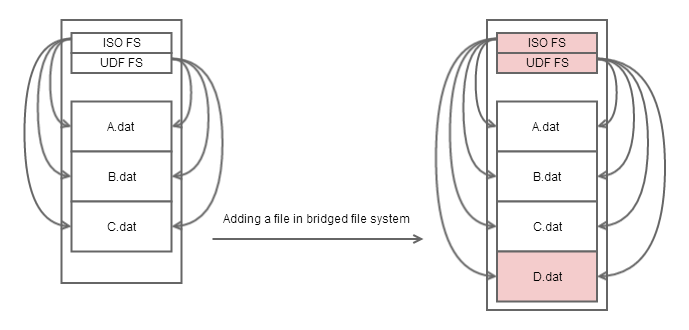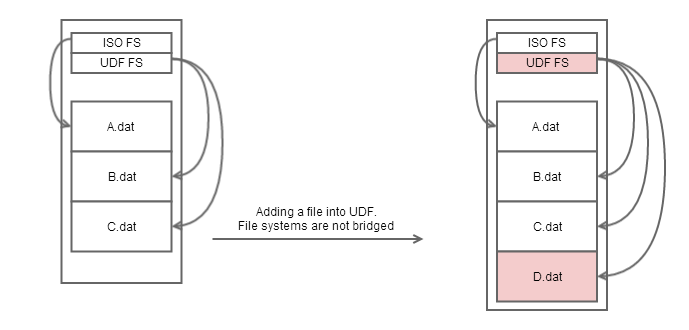WinISO has bulit-in an exclusive feature which can bridge/unbridge the Filesystems.
With bridging, all file systems share same directory structure and file contents.
Without bridging, every file system uses isolated directory structure and file contents.
Bridged File System is usually used for storing same data and enhancing the compatibility for different systems.
It is commonly used in DVD-Video discs. DVD-Video stores files in both ISO9660 and UDF file system, provides backwards compatibility for operating systems which is only supporting ISO9660.
Non-Bridged File System is usually used for designing special purpose disc.
It is commonly used in Window 7 installer discs. The installer files are under UDF; there is only one text file under ISO9660. If your system supports UDF, you can access the installer files. If not, you will only see the text file, which shows that your system is not supporting UDF.
Here is a simply illustration for explain the difference between the bridged and non-bridged file system.
Bridged file system
Both ISO and UDF can see the same three files. Adding or deleting file will affect both file system.
|
Non-bridged file system
ISO can see only A.dat, UDF can see the other two files. Adding or deleting file in one file system will not affect another file system.
|

